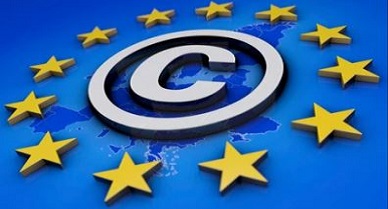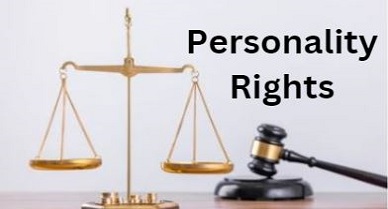Copyright Infringement and Remedies: An Overview
What is Copyright
The term “copyright” describes a group of legal privileges that belong to the person who first created an original work of authorship, such as a piece of literature, music, film, or software. The owner of the copyright, or the person who created the original work, has control over it. He can grant others access or maintain complete ownership by forbidding others from reproducing or duplicating it.
According to Section 14 of the Copyright Act of 1957, copyright is the exclusive right to perform or authorise the performance of any of the following acts in relation to a work or any significant portion thereof:
- Any kind of reproduction is permitted, including saving the work in any format.
- Publicize the work and distribute copies of it.
- Execute the Task in the Public
- Create any cinematic production in homage to the work
- Make an adaption of the text by translating it
Copyright Infringement
Unauthorized use of a work protected by copyright is copyright infringement. Thus, it is the unauthorised use of someone else’s copyrighted work that violates the owner’s rights, such as the right to reproduce, distribute, exhibit, or perform the protected work.
When copyright is violated is specified in Section 51 of the Copyright Act. Section 51 of the Act states that a copyright violation occurs if:
- Any act that only the copyright holder is authorised to perform is carried out by a person without the copyright holder’s consent.
- Unless he was unaware or had no cause to suspect that such consent would result in a breach of copyright, a person permits the use of the location for communication, selling, distribution, or exhibition of an infringing work.
- Someone brings in pirated copies of a work.
- Without the copyright holder’s permission, someone reproduces his work.
Elements of Copyright Infringement
- The author was the sole creator of the piece.
- In fact, the accused plagiarised the author’s work. It is crucial to remember that not every factual copying is punishable by law. To demonstrate that the defendant has violated the author’s copyright, there must be considerable similarity between the author’s and the defendant’s works.
Civil Remedies for Copyright Infringement
Interlocutory Injunctions
The most important remedy is the issuance of an interlocutory injunction. Most frequently, a request for interlocutory relief is made, and the case seldom gets past the interlocutory stage. An interlocutory injunction may only be granted under three circumstances: a case of first impressions. A balance between cost and convenience is also necessary. Last but not least, there must be damage that cannot be repaired.
[Image Sources : Shutterstock]
Pecuniary Remedies
Three monetary remedies are also available to copyright owners under Sections 55 and 58 of the Copyright Act of 1957. First, a profit account enables the owner to demand an amount equal to the profit obtained by illegal means. Second, compensating damages enables the copyright owner to recover losses he incurred due to the infringement. Third, conversion damages are calculated based on the item’s worth.
Anton Pillar Orders
The ownership in Anton Pillar AG V. Manufacturing Processes gave rise to the name of the Anton Pillar order. An Anton Pillar Order has the following components: First, a court must issue an injunction prohibiting the offender from damaging or stealing property. Second, a court order allows the plaintiff’s attorney to search the defendant’s property and remove any items they keep in safekeeping. The defendant should be required to reveal the names and addresses of suppliers and customers as the third order.
Criminal Remedies
The Copyright Act of 1957 provides the following remedies for infringement:
- Up to three years in jail but no less than six months
- The maximum fine is 2,00,000, but it cannot be less than 50,000.
- Searching for and seizing counterfeit goods
- Delivery of counterfeit goods to the owner of the copyright
Fair dealing defence is a crucial component of copyright law. The fair dealing defence permitted some literary work consumption that would have otherwise violated copyrights. According to the fair dealing defence, copyrights cannot impede the same creativity that the law is designed to encourage. It is “an essential component of the social bargain at the core of copyright law, in which we yield some restricted private property rights to assure the benefits of creation to a living culture.”
Fair dealing is a legitimate defence against copyright infringement according to Section 52 of the Indian Copyright Act—the burden of proving infringement shifts to the copyright holder under this defence. However, the fair dealing concept is absent from the Copyright Act, which forced the Indian court to depend on English sources. The Hubbard v. Vosper case, which found that “It is impossible to define what is “fair dealing,” is typically cited by the court. It has to do with the degree. The quantity and scope of the quotations and extracts must come first. Are they overall too numerous and lengthy, to be fair? Then you need to think about how they are used. It can be considered fair dealing if they serve as the foundation for commentary, criticism, or reviews. It might be unjust if they are utilised to deliver the same information as the author but for a different goal. The proportions must then be taken into account. It might be unfair to take lengthy chunks and attach brief comments. Short snippets and lengthy comments, however, might be fair. There might be more things to think about. But in the end, it must be a matter of impression, no matter what is said or done. Fair dealing in copyright law is analogous to fair remark in libel law. The tribunal makes a decision based on the case’s facts. There is information in the current case that the fact-finding panel could use to determine that this is fair dealing.
Conclusion
Copyright infringement is a serious matter that can have significant consequences for both the copyright owner and the infringer. The Copyright Act of 1957 in India provides several remedies for copyright infringement, including interlocutory injunctions, pecuniary remedies, Anton Pillar orders, and criminal remedies. Fair dealing is a legitimate defence against copyright infringement, but the concept is still open to interpretation. It is crucial to understand the rights and privileges that copyright owners have and to respect them. As the internet continues to evolve and offer greater access to information, it is essential to be mindful of copyright laws and to act responsibly when using someone else’s work. Doing so can ensure that creativity and originality are protected and copyright owners are respected.
Author: Divyansh Rana , A Student at Himachal Pradesh National Law University, Shimla, in case of any queries please contact/write back to us at support@ipandlegalfilings.com or IP & Legal Filing.
References
Assignment and Licensing of Copyrights under Copyrights Act (lawbhoomi.com)
Copyright | Oracle
https://www.bing.com/search?q=Copyright+and+its+remedies&FORM=AWRE
What is Copyright Infringement and Remedies in India? – Swarit Advisors
[Law Notes] Indian Copyrights Act, 1957 with Case Laws| IPR by Anubha Mathur (mylawman.co.in)
Remedies Available To A Person For Infringement Of Copyright – iPleaders



